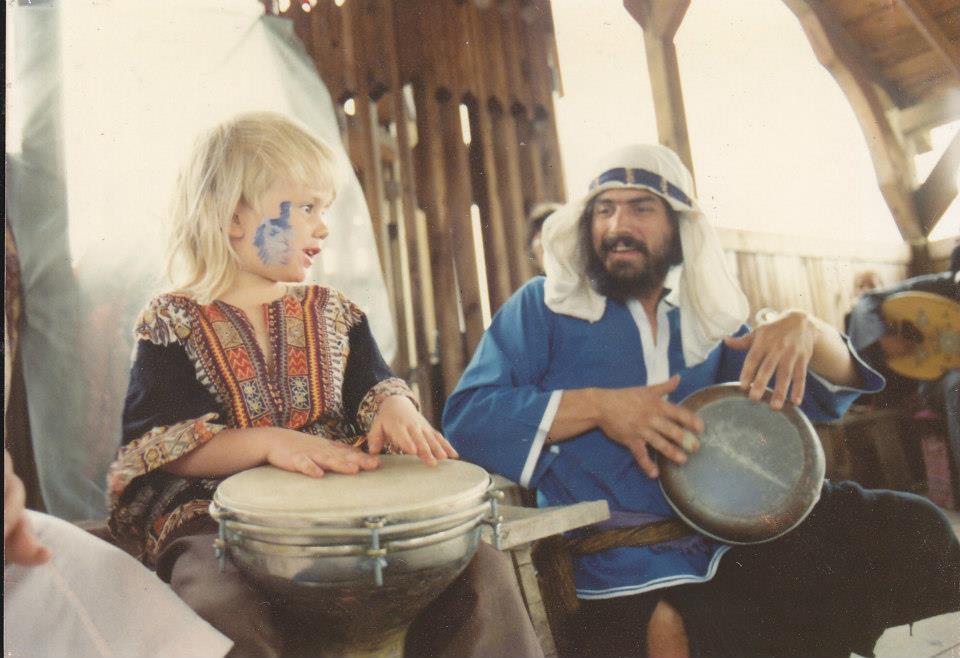Blog
Oscar Pettiford (September 30, 1922 – September 8, 1960) was an American jazz double bassist, cellist and composer. He was one of the earliest musicians to work in the bebop idiom.
Pettiford was born in Okmulgee, Oklahoma, United States. His mother was Choctaw, and his father Harry “Doc” Pettiford was half Cherokee and half African American.
He grew up playing in the family band in which he sang and danced before switching to piano at the age of 12, then to double bass when he was 14.[1] He is quoted as saying he did not like the way people were playing the bass, so he developed his own way of playing it. Despite being admired by the likes of Milt Hinton at the age of 14, he gave up in 1941 as he did not believe he could make a living. Five months later, he once again met Hinton, who persuaded him to return to music.
In 1942, he joined the Charlie Barnet band and in 1943 gained wider public attention after recording with Coleman Hawkins on his “The Man I Love“. Pettiford also recorded with Earl Hines and Ben Webster around this time. After he moved to New York, he was one of the musicians (together with Dizzy Gillespie, Thelonious Monk, Kenny Clarke) who in the early 1940s jammed at Minton’s Playhouse, where the music style developed that later was called bebop. He and Dizzy Gillespieled a bop group in 1943. In 1945, Pettiford went with Hawkins to California, where he appeared in The Crimson Canary, a mystery movie known for its jazz soundtrack, which also featured Josh White. He then worked with Duke Ellington from 1945 to 1948 and for Woody Herman in 1949, before working mainly as a leader in the 1950s. He died in 1960 in Copenhagen shortly before his 38th birthday, from a virus closely related to polio.
more...Bernard “Buddy” Rich (September 30, 1917 – April 2, 1987) was an American jazz drummer, songwriter, conductor, and bandleader. He is considered one of the most influential drummers of all time.
Rich was born and raised in Brooklyn, New York, United States. He discovered his affinity for jazz music at a young age and began drumming at the age of two. He began playing jazz in 1937, working with acts such as Bunny Berigan, Artie Shaw, Tommy Dorsey, Count Basie, and Harry James. From 1942 to 1944, Rich served in the U.S. Marines. From 1945 to 1948, he led the Buddy Rich Orchestra. In 1966, he recorded a big-band style arrangement of songs from West Side Story. He found lasting success in 1966[citation needed] with the formation of the Buddy Rich Big Band, also billed as the Buddy Rich Band and The Big Band Machine.
Rich was known for his virtuoso technique, power, and speed. He was an advocate of the traditional grip, though he occasionally used matched grip when playing the toms. Despite his commercial success and musical talent, Rich never learned how to read sheet music, preferring to listen to drum parts and play them from memory.
more...“Bulería” is the most characteristic flamenco style of Jerez de la Frontera. It is generally composed of three or four eight-syllable verses. This is one of the most complex dancing and guitar styles: bustling, happy and cheerful. It is characterised by a fast rhythm and a redoubled beat. It is more suitable than other flamenco styles to be sung accompanied by flamenco clapping, “jaleo” and other shouts and expresive voices. “Bulerías” constitute an usually dance to finish all flamencos parties (composing a semicircle, people dance in the middle of it a part of the song). “Loco Mateo” was the first performer of this style, finishing his “soleares or soleás” with “bulerías”. Hence “bulería” results from “solea”. It was originated in the late 19th century. In “Sinfonía Virtual” magazine Guillermo Castro documented that the term “bulería” was used for the first time in the 17th century, but it didn’t acquire its flamenco meaning until the early 20th century. It was earlier believed that the first appearance of this style came up with the painting of José García Ramos “Baile por bulerías” (1884), preserved in the Museum of Fine Arts of Seville. Currently, it’s widely known that this paiting had other titles previously such as “Tango“, “Bailarina” or “El Baile”. It was not until second half of the XX century that it adopted the name “Baile por Bulerías”. The most flamenco “bulerías” are in Phrygian mode (with the I chord mutation that becomes Major perfect, often combining melodic and harmonic turns on the I and VI).
more...
Teaching a Rhythm Roots Workshop at Tasks Unlimited (https://tasksunlimited.org) St Louis Park location working with the Mental Health community. Celebrating world drumming and world cultures. Sept 1st thru Oct 13th on Thursdays 930-11am
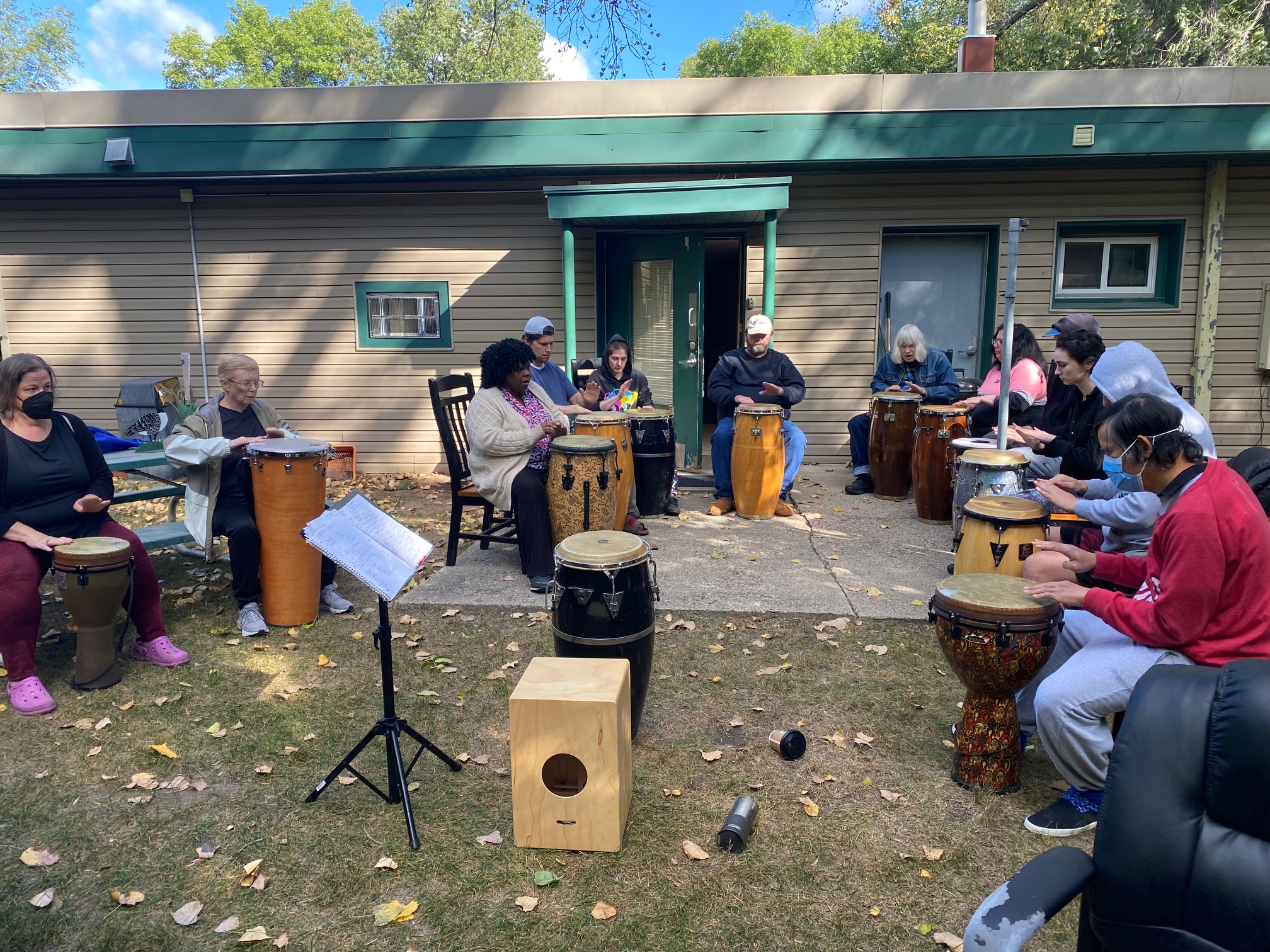
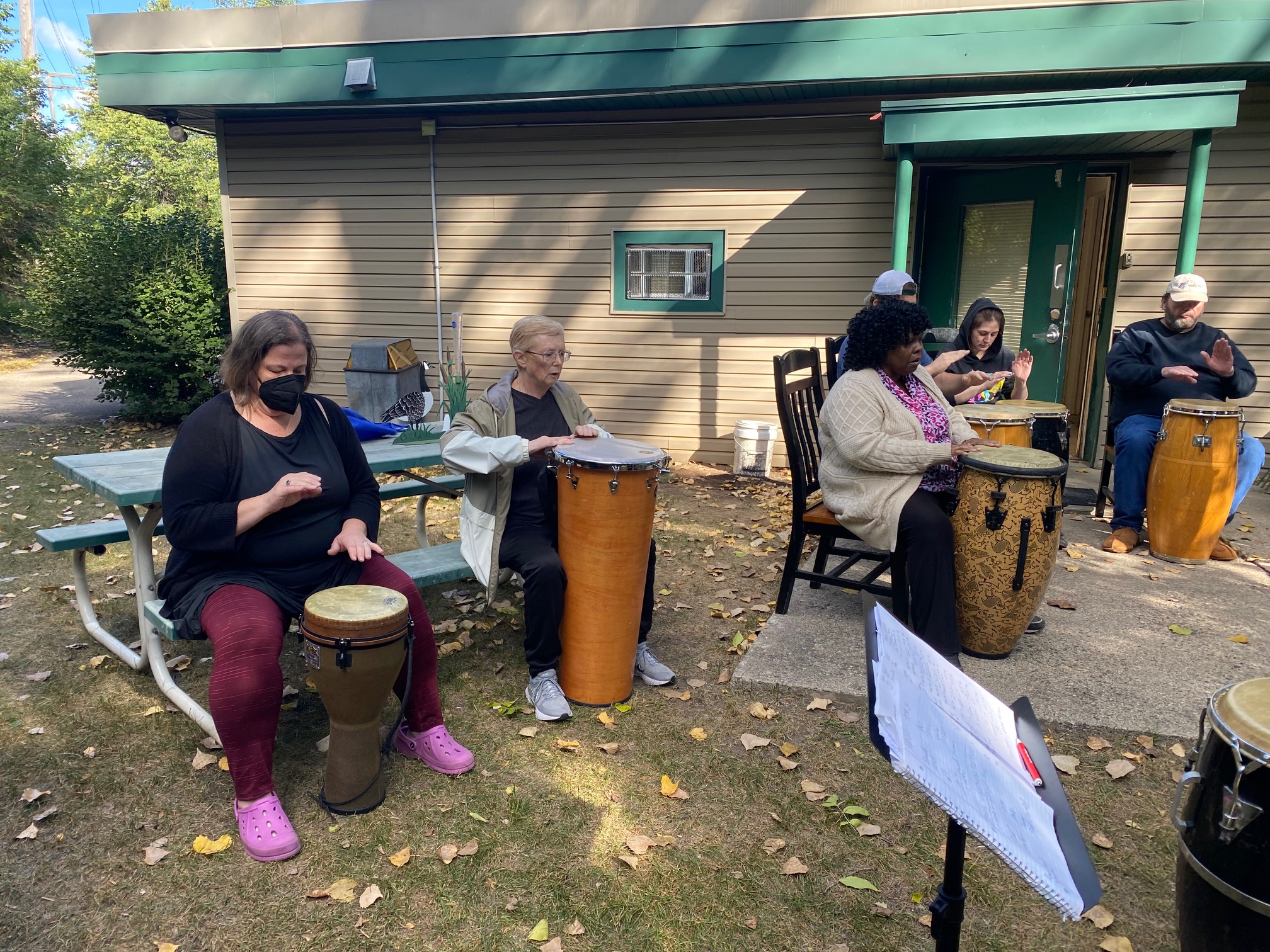
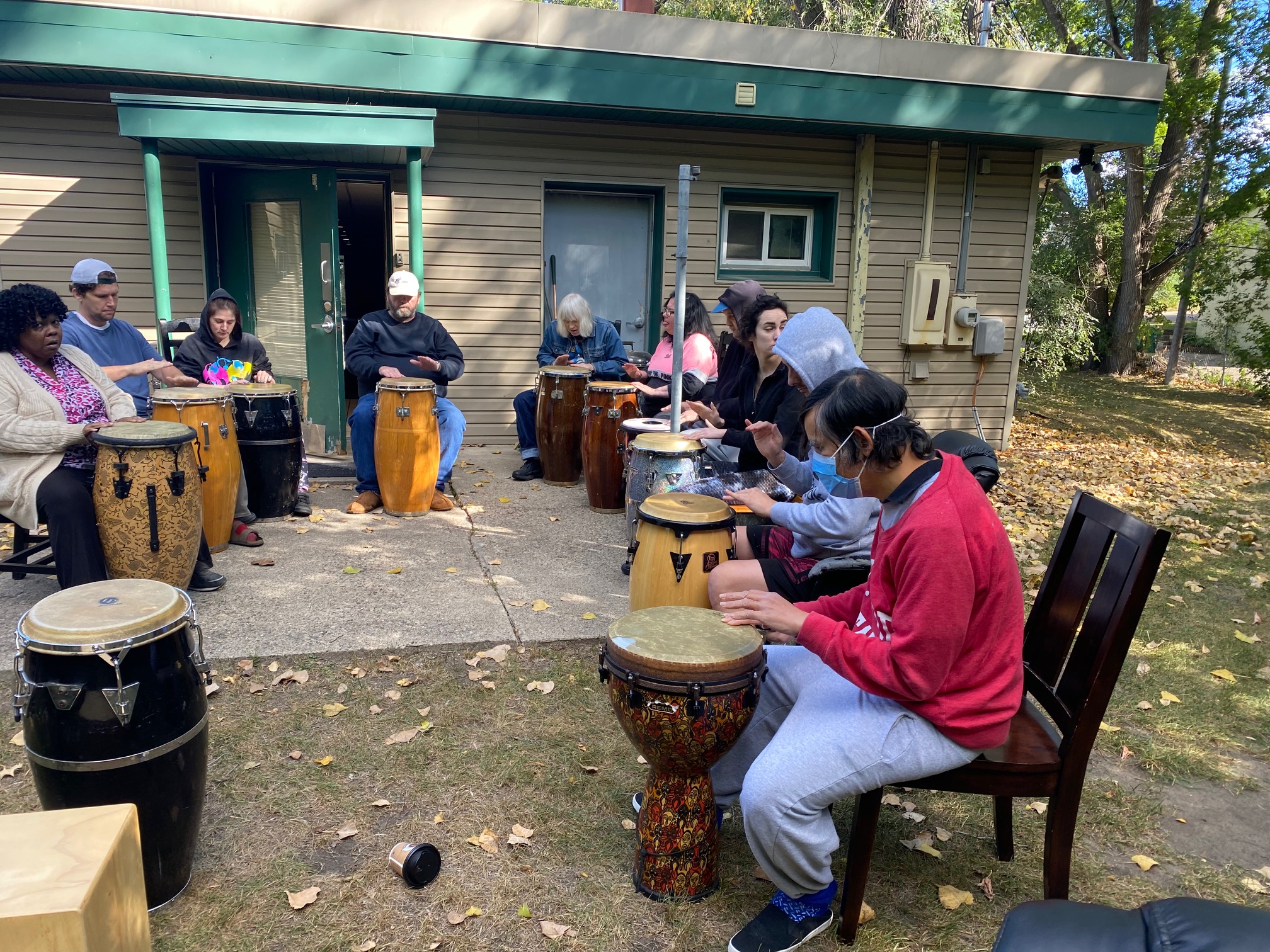
The Pelican Nebula (also known as IC 5070 and IC 5067) is an H II region associated with the North America Nebula in the constellation Cygnus. The gaseous contortions of this emission nebula bear a resemblance to a pelican, giving rise to its name. The Pelican Nebula is located nearby first magnitude star Deneb, and is divided from its more prominent neighbour, the North America Nebula, by a foreground molecular cloud filled with dark dust. Both are part of the larger H II region of Westerhout 40.
The Pelican is much studied because it has a particularly active mix of star formation and evolving gas clouds. The light from young energetic stars is slowly transforming cold gas to hot and causing an ionization front gradually to advance outward. Particularly dense filaments of cold gas are seen to still remain, and among these are found two jets emitted from the Herbig–Haro object 555. Millions of years from now this nebula might no longer be known as the Pelican, as the balance and placement of stars and gas will leave something that appears completely different.
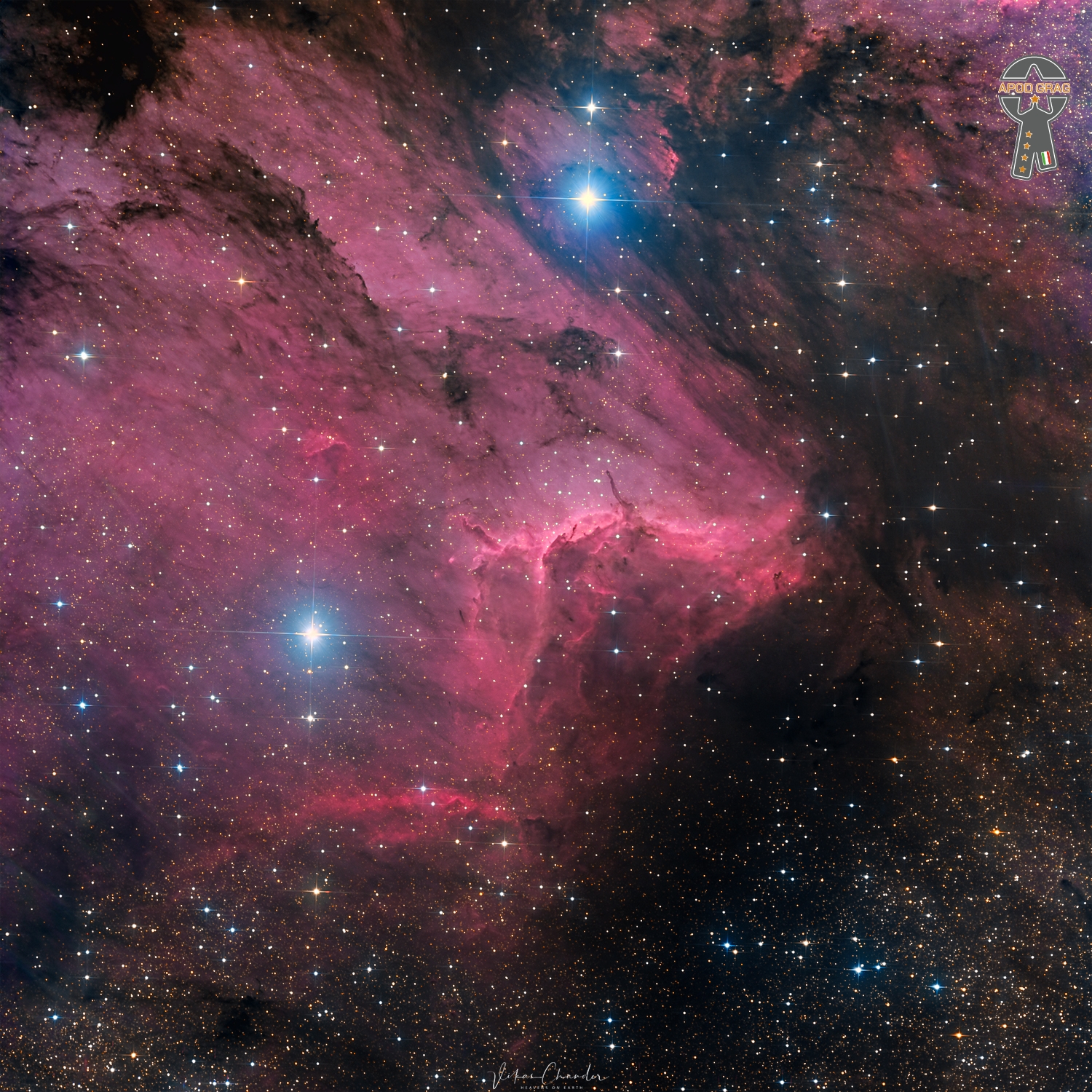
Roy Sinclair Campbell Jr. (September 29, 1952 – January 9, 2014) was an American trumpeter frequently linked to free jazz, although he also performed rhythm and blues and funk during his career.
Born in Los Angeles, California, in 1952, Campbell was raised in New York City. At the age of fifteen, he began learning to play trumpet and soon studied at the Jazz Mobile program along with Kenny Dorham, Lee Morgan and Joe Newman. Throughout the 1960s, still unacquainted with the avant-garde movement, Campbell performed in the big bands of the Manhattan Community College. From the 1970s onwards, he performed primarily within the context of free jazz, spending some of this period studying with Yusef Lateef. Campbell composed the film music for the documentary Survival in New York (1989) by Rosa von Praunheim
more...Jean-Luc Ponty (born 29 September 1942) is a French jazz violinist and composer.
Ponty was born into a family of classical musicians in Avranches, France. His father taught violin, his mother taught piano. At sixteen, he was admitted to the Conservatoire National Supérieur de Musique de Paris, graduating two years later with the institution’s highest honor, Premier Prix (first prize). He was hired by the Concerts Lamoureux in which he played for three years.
While still a member of the orchestra in Paris, Ponty picked up a side job playing clarinet (which his father had taught him) for a college jazz band, that regularly performed at local parties. It proved life-changing. A growing interest in Miles Davis and John Coltrane compelled him to take up tenor saxophone. One night after an orchestra concert, and still wearing his tuxedo, Ponty found himself at a local club with only his violin. Within four years, he was widely accepted as the leading figure in “jazz fiddle”.
more...Robert Lee “Chick” Willis (September 24, 1934 – December 7, 2013) was an American blues singer and guitarist, who performed and recorded from the 1950s to the 2000s.
He was born in Cabaniss, Monroe County, Georgia, the cousin of Chuck Willis. He served in the military in the early 1950s, before working as a chauffeur for Chuck Willis during his heyday. He won a talent show at the Magnolia Ballroom in Atlanta and made his first record in 1956, with the Ebb Records‘ single “You’re Mine”. Initially, he only sang, but learned guitar while touring with his cousin; Guitar Slim was one of his foremost influences.
more...According to some ancient legends, the spirits of above and below worlds fight there, sometimes quite actively during eruptions of this enormous volcano in California, USA. Such drama can well be imagined in this deep sky image taken in late June. Evident above the snow-covered peak is the central band of our Milky Way Galaxy, on the left, and a picturesque sky toward the modern constellations of Scorpiusand Ophiuchus, above and to the right. The bright orange star Antares and the colorful rho Ophiuchi cloud complex are visible just to the right of Mount Shasta, while the red emission nebula surrounding the star zeta Ophiuchi appears on the top right. The static earth image in the featured composite was taken during the blue hour, while a two-panel panorama tracking the background sky was taken later that night with the same camera and from the same location. Within a few million years, Antares, some stars in the rho Ophiuchi system, and zeta Ophiuchi will all likely explode as supernovas.
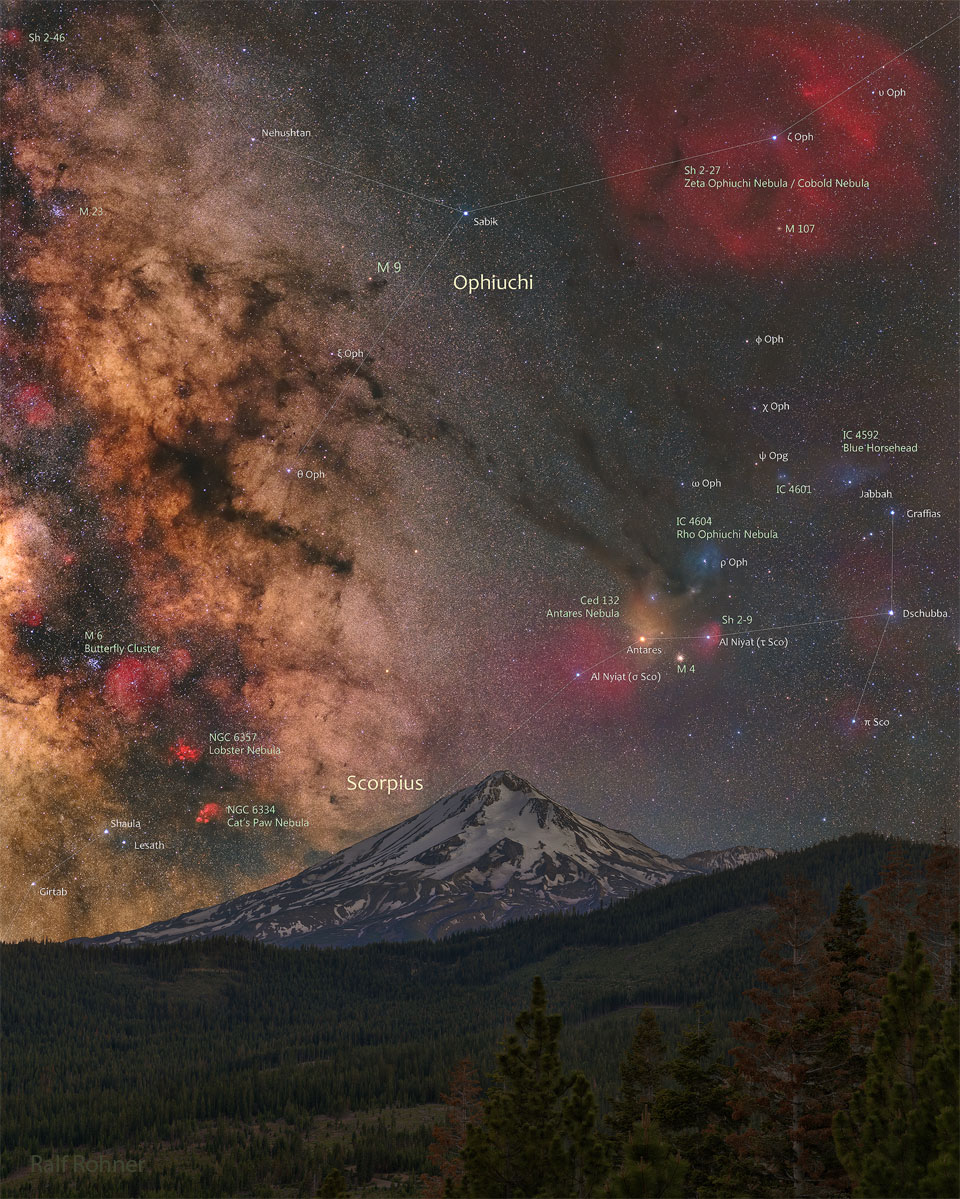
Kenneth David Kirkland (September 28, 1955 – November 12, 1998) was an American pianist and keyboardist.
Born in Brooklyn, New York, United States, Kirkland was six when he first sat down at a piano keyboard. After years of Catholic schooling, Kirkland enrolled at the Manhattan School of Music, where he studied classical piano performance, classical theory and composition. Kirkland’s first professional work came with Polish fusion violinist Michal Urbaniak, touring throughout Europe with his group in 1977. Coincidentally, his next high-profile gig was with another Eastern European jazz émigré, Miroslav Vitous. Kirkland is featured on Vitous’ ECM recordings First Meeting and Miroslav Vitous Group. Kirkland was found dead in his Queens apartment on Friday, November 13, 1998. The official doctor’s report listed his death as due to congestive heart failure. He was survived by his mother, brother and two sisters.
more...
Benjamin Earl King (né Nelson; September 28, 1938 – April 30, 2015) was an American soul and R&B singer and record producer. He is best known as the singer and co-composer of “Stand by Me“—a U.S. Top 10 hit, both in 1961 and later in 1986 (when it was used as the theme to the film of the same name), a number one hitin the United Kingdom in 1987, and number 25 on the RIAA‘s list of Songs of the Century—and as one of the principal lead singers of the R&B vocal group The Drifters, notably singing the lead vocals of one of their biggest global hit singles (and only U.S. No. 1 hit), “Save the Last Dance for Me“. Besides “Stand By Me”, his songs “There Goes My Baby” and “Spanish Harlem” also appeared on the Rock and Roll Hall of Fame‘s list of 500 Songs That Shaped Rock and Roll.
Ben E. King was born Benjamin Earl Nelson on September 28, 1938, in Henderson, North Carolina, and moved to Harlem, New York, at the age of nine in 1947.King began singing in church choirs, and in high school formed the Four B’s, a doo-wop group that occasionally performed at the Apollo Theater.
more...Koko Taylor (born Cora Anna Walton, September 28, 1928 – June 3, 2009) was an American singer whose style encompassed Chicago blues, electric blues, rhythm and blues and soul blues. Sometimes called “The Queen of the Blues”, she was known for her rough, powerful vocals. Born on a farm near Memphis, Tennessee, Taylor was the daughter of a sharecropper. She left Tennessee for Chicago in 1952 with her husband, Robert “Pops” Taylor, a truck driver. In the late 1950s, she began singing in blues clubs in Chicago. She was spotted by Willie Dixon in 1962, and this led to more opportunities for performing and her first recordings. In 1963 she had a single on USA Records, and in 1964 a cut on a Chicago blues collection on Spivey Records, called Chicago Blues. In 1964 Dixon brought Taylor to Checker Records, a subsidiary label of Chess Records, for which she recorded “Wang Dang Doodle“, a song written by Dixon and recorded by Howlin’ Wolf five years earlier. The record became a hit, reaching number four on the R&B chart and number 58 on the pop chart in 1966,and selling a million copies. She recorded several versions of the song over the years, including a live rendition at the 1967 American Folk Blues Festival, with the harmonica player Little Walter and the guitarist Hound Dog Taylor. Her subsequent recordings, both original songs and covers, did not achieve as much success on the charts.
more...John Gilmore (September 28, 1931 – August 20, 1995) was an American jazz saxophonist, clarinetist, and percussionist. He was known for his tenure with the avant-garde keyboardist/bandleader Sun Ra from the 1950s to the 1990s.
Gilmore was raised in Chicago and played clarinet from the age of 14. He took up the tenor saxophone while serving in the United States Air Force from 1948 through 1951. He then pursued a musical career, beginning as a tenor saxophonist on a national tour with the Harlem Globetrotters in an ensemble that included pianist Earl Hines in 1952.
In 1953 Gilmore met pianist and bandleader Sun Ra who had a profound impact on him as a musician. For the next four decades, he recorded and performed almost exclusively with Sun Ra; first as a trio, and then in the band Arkestra. This was puzzling to some, who noted Gilmore’s talent, and thought he could be a major star like John Coltrane or Sonny Rollins. Despite being five years older than Gilmore, Coltrane was impressed with his playing, and took informal lessons from Gilmore in the late 1950s. Coltrane’s epochal, proto–free jazz “Chasin’ the Trane” was inspired partly by Gilmore’s sound. The Penguin Guide to Jazz suggests Gilmore remained an influence in Coltrane’s later period, particularly on Sun Ship.
more...The Triangulum Galaxy is a spiral galaxy of 2.73 million light-years from Earth in the Triangulum constellation . It is catalogued as Messier 33 or NGC598. With diameter of 61,100 light-years, the Triangulum Galaxy is the third-largest member of the Local Group of galaxies, behind the Andromeda Galaxy and the Milky Way. It is one of the most distant permanent objects that can be viewed with the naked eye.

More Posts
- The Cosmos with NGC 6543
- Tom Petty Day
- Eddie Harris Day
- Willie Jones Jr Day
- Jelly Roll Morton Day
- World Music with Domog (Домог)
- Israel Vibration
- RHYTHM ROOTS RESIDENCY Performance MIA 10-19-18
- The Cosmos with Sh2-132
- Masabumi Kikuchi Day
- Piano Red Day
- World Music with Cameron de las Isla y Paco de Lucia
- Daily Roots with Burning Spear
- 2018 Beau Koo Jacks-Everything I Do Gonna Be Funky 1-25-2018 @ the Amsterdam Benefit for Tom Zosel
- The Cosmos with IC 4628
- Esperanza Spalding Day
- Wynton Marsalis Day
- Chuck Berry Day
- World Music with Andelucious
- Daily Roots with Lloyd Parks and Joseph Cotton
